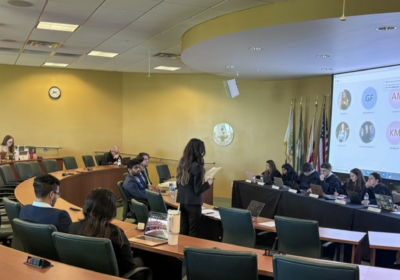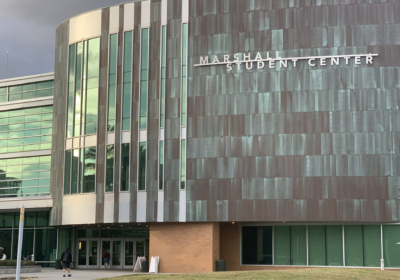CERN supports evidence of Higgs boson particle
The European Organization for Nuclear Research (CERN) announced at a conference early Wednesday morning that they have evidence to support the existence of the Higgs boson and are on their way to a major scientific breakthrough.
While the existence of the Higgs boson the fundamental particle of the hypothetical Higgs field that explains why some particles have mass and others do not was not definitively proven at the conference, CERNs highly anticipated report on the findings from its two experiments, ATLAS and CMS, showed a particle that could be proven to be the Higgs boson after further testing. Lawrence Berkeley National Laboratory researchers contributed to the ATLAS experiment.
This historic milestone is only the beginning, said CERN director Rolf Heuer to cap the presentation. It has global implications for the future.
Ian Hinchliffe, senior physicist at the Berkeley Lab and head of the the labs participation in ATLAS, said CERN will need much more detail on the properties of the Higgs boson to prove its existence. The organization will test the properties of the Higgs boson outlined in the Standard Model, the well-tested 20th century theory that most physicists today believe describes the fundamental particle.
CERN will also continue to collect data using the Large Hadron Collider a particle accelerator with a 27-kilometer circumference on the Swiss-French border near Geneva and the testing site for ATLAS and CMS.
Imagine (the Higgs field) like honey or molasses, said Beate Heinemann, Berkeley Lab scientist and campus physics professor. Instead of it just being some random molasses, its a lot of little Higgs (boson) particles.
According to Heinemann, if a particle is slowed down by the Higgs field, it has mass, but if it is not slowed down by the Higgs field, it has no mass.
Although there are currently no hypotheses for practical applications for the Higgs boson, its discovery could provide the foundation for a larger understanding of physics and the universe, according to Paul Preuss, a science writer at the Berkeley Labs public affairs office.
Its really the keystone to how we understand how the world works, Pruess said. Its a beginning point for where we can explore down other fascinating corridors to find extra dimensions of space, or miniature black holes, or find out what dark matter is made of or any more future unknowns.






